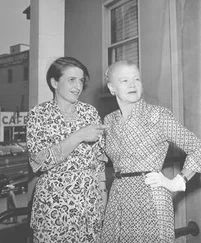Henry Wheatley - Samuel Pepys and the World He Lived In
Здесь есть возможность читать онлайн «Henry Wheatley - Samuel Pepys and the World He Lived In» — ознакомительный отрывок электронной книги совершенно бесплатно, а после прочтения отрывка купить полную версию. В некоторых случаях можно слушать аудио, скачать через торрент в формате fb2 и присутствует краткое содержание. Жанр: Биографии и Мемуары, foreign_antique, на английском языке. Описание произведения, (предисловие) а так же отзывы посетителей доступны на портале библиотеки ЛибКат.
- Название:Samuel Pepys and the World He Lived In
- Автор:
- Жанр:
- Год:неизвестен
- ISBN:нет данных
- Рейтинг книги:4 / 5. Голосов: 1
-
Избранное:Добавить в избранное
- Отзывы:
-
Ваша оценка:
- 80
- 1
- 2
- 3
- 4
- 5
Samuel Pepys and the World He Lived In: краткое содержание, описание и аннотация
Предлагаем к чтению аннотацию, описание, краткое содержание или предисловие (зависит от того, что написал сам автор книги «Samuel Pepys and the World He Lived In»). Если вы не нашли необходимую информацию о книге — напишите в комментариях, мы постараемся отыскать её.
Samuel Pepys and the World He Lived In — читать онлайн ознакомительный отрывок
Ниже представлен текст книги, разбитый по страницам. Система сохранения места последней прочитанной страницы, позволяет с удобством читать онлайн бесплатно книгу «Samuel Pepys and the World He Lived In», без необходимости каждый раз заново искать на чём Вы остановились. Поставьте закладку, и сможете в любой момент перейти на страницу, на которой закончили чтение.
Интервал:
Закладка:
Pepys had never been a healthy man, and as years began to tell upon him he suffered much. One day, when he was at Tangier, he was frightened by the old swimming in the head coming over him, and this made him melancholy. 94In December, 1686, he was again troubled with pain night and day, caused by the complaint for which he was successfully operated upon before the “ Diary ” commences. In a letter to his brother-in-law, St. Michel, he expresses the opinion that a general decay of his stomach and system will soon bring his life to an end; but he had several years still to live.
About this time Pepys secured the services of a Mrs. Fane as his housekeeper, and of her he wrote, in 1689: “I do not believe that a more knowing, faithful, or vigilant person, or a stricter keeper at home (which is to me a great addition)—a person more useful in sickness as well as health, than Mrs. Fane is, can anywhere be found. As such I esteem and love her with all my heart, and should ever desire to keep her acquaintance, friendship, and neighbourhood.” But—and this is a very important reservation—Mrs. Fane had a very disagreeable temper, as her victim goes on to say: “She hath a height of spirit, captiousness of humour, and bitterness and noise of tongue, that of all womankind I have hitherto had to do withal, do render her conversation and comportment as a servant most insupportable.” 95He parted with her once, but Mrs. Skinner prevailed upon him to receive her again. At last, after forbearance for three years and a-half, she was obliged to leave finally. Mr. James Houblon pleaded for her, but when he heard the above explanation, he was unable to say more.
In 1700, Pepys removed from York Buildings to what his friend Evelyn calls his “Paradisian Clapham.” Here he lived with his old clerk and friend, William Hewer, but his infirmities kept him constantly in the house.
The eminent Dr. John Wallis, Savilian Professor of Geometry in the University of Oxford, was highly esteemed by Pepys, who had known him for many years as one of the most distinguished Fellows of the Royal Society. In 1701, therefore, the Diarist matured a scheme which did him the greatest credit. He sent Sir Godfrey Kneller down to Oxford to paint the old man’s portrait; and, when it was finished, he presented the picture to the University of Oxford, and received in exchange a Latin diploma thanking him in gorgeous language for his munificence. Pepys explained to Kneller that it had long been his wish to provide from the painter’s hands a means of “immortalizing the memory of the person—for his fame can never die—of that great man and my most honoured friend, Dr. Wallis, to be lodged as an humble present of mine, though a Cambridge man, to my dear aunt, the University of Oxford.”
So much for the donor. The painter, on his part, was proud of his work, and assured Pepys that he had never done a better picture, if so good a one, in his life before.
In the following year all was over with both Wallis and Pepys. On the 26th of May, 1703, Samuel Pepys, after long-continued suffering, breathed his last, in the presence of the learned Dr. George Hickes, the non-juring Dean of Worcester, who writes as follows of the death-bed: “The greatness of his behaviour, in his long and sharp tryall before his death, was in every respect answerable to his great life; and I believe no man ever went out of this world with greater contempt of it, or a more lively faith in every thing that was revealed of the world to come. I administered the Holy Sacrament twice in his illnesse to him, and had administered it a third time but for a sudden fit of illness that happened at the appointed time of administering of it. Twice I gave him the absolution of the church, which he desired, and received with all reverence and comfort, and I never attended any sick or dying person that dyed with so much Christian greatnesse of mind, or a more lively sense of immortality, or so much fortitude and patience, in so long and sharp a tryall, or greater resignation to the Will which he most devoutly acknowledged to be the wisdom of God: and I doubt not but he is now a very blessed spirit, according to his motto, mens cujusque is est quisque .”
It was found necessary to have a post-mortem examination of his body, when a nest of seven stones, weighing about four and a-half ounces, was found in the left kidney, which was entirely ulcerated. His constitution generally, however, appears to have been strong. The body was brought from Clapham, and buried in St. Olave’s Church, Crutched Friars, on the 5th of June, at nine o’clock in the evening, in a vault close by the monument erected to Mrs. Pepys.
John Jackson, Pepys’s nephew, sent a suit of mourning to Evelyn, and expressed his sorrow that distance and his correspondent’s health would prevent him from assisting at the holding-up of the pall.
It appears from a list printed at the end of Pepys’s correspondence, that mourning was given to forty persons, and that forty-five rings at 20 s. , sixty-two at 15 s. , and sixteen at 10 s. were distributed to relations, godchildren, servants, and friends; also to representatives of the Royal Society, of the Universities of Cambridge and Oxford, of the Admiralty, and of the Navy Office. The bulk of the property was bequeathed to John Jackson, the son of Mrs. Jackson, the Pall Pepys of the “Diary;” but the money which was left was much less than might have been expected. In spite of all his public services, which were universally acknowledged, he received neither pension nor remuneration of any kind after his enforced retirement at the Revolution. Public men in those days, without private property, must have starved if they had not taken fees, for the King had no idea of wasting his money by paying salaries. At the time of Pepys’s death there was a balance of £ 28,007 2 s. 1¼ d. due to him from the Crown, and the original vouchers still remain an heirloom in the family.
CHAPTER IV.
TANGIER
“And with asphaltick slime broad as the gate
Deep to the roots of hell the gather’d beach
They fasten’d: and the mole immense wrought on
Over the foaming deep high-arch’d: a bridge
Of length prodigious.”—Paradise Lost, x. 298–302.
PEPYS was so intimately connected with the government of Tangier during the twenty-two years it remained in the possession of the English, that it seems necessary, in a memoir of him, to give some account of the history of the place during that period.
Tangier is a seaport, on a small bay or inlet of the Straits of Gibraltar, which affords the only good harbour for shipping on the sea-board of Morocco, an extent of coast of about 900 miles. The town was early coveted by the Portuguese, and in 1437 their army attacked it, but were defeated beneath the walls. On this occasion Dom Fernando, the King’s brother, was left behind as a hostage. A treaty of peace was concluded, but the stipulations not being executed, the Moors threw Dom Fernando into prison, where he died. The prince’s body was treated with insult, and hung up by the heels over the city walls. A few years later this unworthy conduct was revenged, for in 1463, the Portuguese being successful in battle, Alonzo V. took the town from the Moors. For two centuries the Portuguese kept possession, but about the period of our Restoration they found the place somewhat of an encumbrance, and were anxious to obtain a desirable alliance against their enemies the Spaniards, by transferring it to another power. In November, 1660, Thomas Maynard, British Consul at Lisbon, writing to Sir Edward Nicholas, says, that the King of Portugal would part with Tangier to England on reasonable terms. 96
Shortly afterwards the Portuguese ambassador in London proposed the Infanta Katharine, daughter of that Duke of Braganza who became King of Portugal as Joam IV., as a wife for Charles II., offering at the same time a portion of half a million pounds sterling (“almost double what any King [of England] had ever received in money by any marriage”), 97and in addition a grant of a free trade in Brazil and the East Indies, and the possession of Tangier and the Island of Bombay. The ambassador observed that these two places “might reasonably be valued above the portion in money.” 98It was supposed that the possession of Tangier would be of infinite benefit to England and a security to her trade, and the Earl of Sandwich and Sir John Lawson were consulted respecting the proposed acquisition. Lord Sandwich said that if the town were walled and fortified with brass, it would yet repay the cost, but he only knew it from the sea. Lawson had been in it, and said that it was a place of that importance, that if it were in the hands of Hollanders they would quickly make a mole, which could easily be done. Then ships would ride securely in all weathers, and we could keep the place against the world, and give the law to the trade of the Mediterranean. 99The Portuguese were delighted at the prospect of a marriage between the Infanta and Charles, and after a few hitches the treaty was concluded, but some murmurs were heard against the delivery of Tangier into the hands of heretics. Dom Fernando de Menezes, the Governor, entreated the Queen Regent to spare him the grief of handing over the city to the enemies of the Catholic faith. He was given to understand that, if he obeyed instructions, a marquisate would be conferred upon him, but if he continued to resist he would be dismissed. Upon this, Dom Fernando threw up his command.
Читать дальшеИнтервал:
Закладка:
Похожие книги на «Samuel Pepys and the World He Lived In»
Представляем Вашему вниманию похожие книги на «Samuel Pepys and the World He Lived In» списком для выбора. Мы отобрали схожую по названию и смыслу литературу в надежде предоставить читателям больше вариантов отыскать новые, интересные, ещё непрочитанные произведения.
Обсуждение, отзывы о книге «Samuel Pepys and the World He Lived In» и просто собственные мнения читателей. Оставьте ваши комментарии, напишите, что Вы думаете о произведении, его смысле или главных героях. Укажите что конкретно понравилось, а что нет, и почему Вы так считаете.












